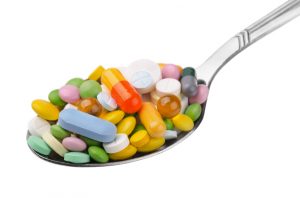
We must remember that before 1929, when the first antibiotic was discovered by Alexander Fleming, there was nothing but similar local measures to use on any infection, most of them based on tried and tested folklore. That is less than a 100 years ago – and not many people died from similar infections. We actually have an immune system and it’s quite good at fighting off infection. If you get an infected cut, your body fights off the infection and, while the healing process may be longer you still have a 90 percent chance of healing without antibiotics.
So what does that mean for dentists?
So what?
I know I have blogged about this before, but there continues to be evidence that we over-prescribe antibiotics, and as a profession we may be helping to kill people with more serious infections by adding to the general increase in antibiotic resistance and the rise in ‘super-infections’.
Health professionals are being asked to become ‘Antibiotic Guardians’ by agreeing to do one thing which will help make better use of these medicines and safeguard them for future generations. Smile newsletter states: ‘The campaign calls on dentists to act to reduce unnecessary prescribing and also raise awareness among patients that antibiotics are not always the best treatment for dental infections. Antibiotics are increasingly losing their effectiveness and there are very few new antibiotics in the development pipeline, which is why it is so important our existing antibiotics are used wisely.’
It’s so easy…
It’s so easy, especially on a busy day, to take the easy route and just give someone a script for Amoxicillin when they come in with pain. It is an urban myth that we perpetuate which says that a dentist has to reduce the extent of an infection before extraction. In fact, current guidance insists that we should try all ‘local’ measures to control an infection before resorting to antibiotics. These measures include surface disinfection, opening a tooth to drain, or extraction to remove the causative tooth. Again, popular myth has it that LA doesn’t work if there is an acute infection, or that it is dangerous to do this, however, it is quite possible to remove a tooth, even in the presence of an infection. Very occasionally, an acute infection will inhibit the effectiveness of an anaesthetic, and on these occasions we end up having to resort to antibiotics having tried without first. This is in line with current guidance.
This guidance is driven by the accepted risks from taking antibiotics which include spontaneous sensitivity and the growth of resistant strains of bacteria. The BNF (British National Formulary) 2013, which we all refer to in relation to prescribing, states: “Antibacterial drugs should only be prescribed for the treatment of oral infections on the basis of defined need. They may be used in conjunction with (but not as an alternative to) other appropriate measures, such as providing drainage or extracting a tooth.”
In addition, a recent paper, ‘Antibiotic prescribing practices by dentists: a review’, by Najla Saeed Dar-Odeh1 et al. Dove Press. states: “Indications for the use of systemic antibiotics in dentistry are limited, since most dental and periodontal diseases are best managed by operative intervention and oral hygiene measures.”
Damned if we do, damned if we don’t
We know that there are risks either way. Every practitioner has to make a judgement call in each case as to whether to prescribe antibiotics to reduce a worsening infection, or to take a local measure which might be more unpopular with the patient, but ultimately less risky to their general health. Sometimes we are made to feel in the wrong whichever way we go.
Direct intervention can mean a number of different procedures. Application of surface disinfection, opening canals to extirpate remnants or simply extract a tooth.
Possible U-turn!!
Smile News also has bad news. In the very week that antibiotic resistance and the need to cut down on unnecessary use of the medicines was being highlighted, it states: “A study was released that showed a significant rise in the number of people diagnosed with a serious heart infection alongside a large fall in the prescribing of antibiotic prophylaxis to dental patients.
In 2008, NICE recommended dentists should no longer give antibiotics before invasive treatments to people considered at risk of Infective Endocarditis (IE), which in 40 per cent of cases is caused by bacteria from the mouth. Researchers found that since then, there has been an average of an extra 35 IE cases a month; however, no causal relationship was found.”
NICE has since said it will review its guidance, and European/US guidelines still recommend giving antibiotics as a preventive measure in high-risk patients before having dental work, but NICE had advised stopping the practice because of lack of evidence.
Whilst the advice stays as it is we should continue to follow it, in order to protect ourselves. We should at least consider becoming Antibiotic Guardians and do our best to limit prescriptions. Following our own policies, such as the Quality Compliance Systems Evidence Based Practice Policy and Procedure, will help define your position in this dilemma.






